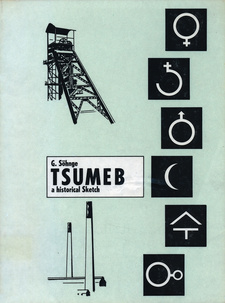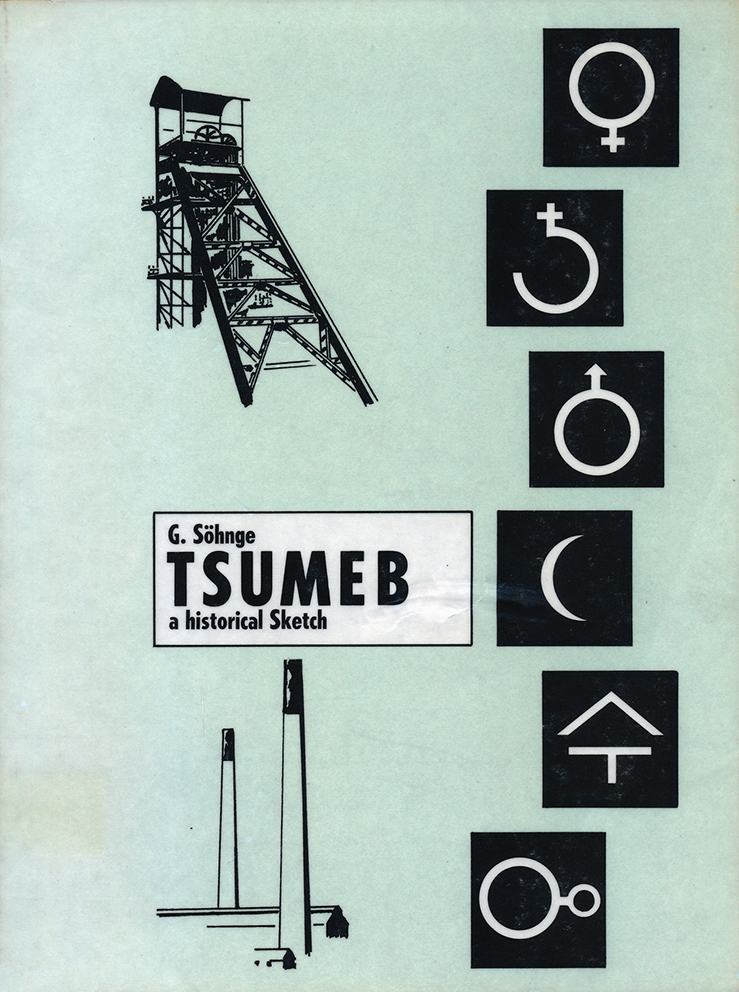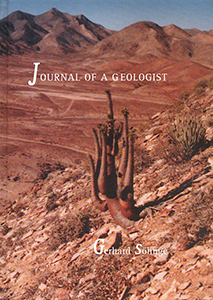Tsumeb. A Historical Sketch, by Gerhard Söhnge

Tsumeb. A Historical Sketch, by Gerhard Söhnge. Committee of the SWA Scientific Society. South West Africa, Windhoek 1967
Tsumeb: A Historical Sketch written by Gerhard Söhnge in 1966, is a rare documentation on South West Afrika's mining history in the Tsumeb region, spanning from 1906 to 1966.
III. Productive Era of the Otavi Minen-und Eisenbahn-Gesellschaft: 1906—1946
Tsumeb Mine.
In June, 1906, the O.M.E.G. head-office in Berlin requested the despatch of two 50-ton samples of freshly broken ore from underground. The sorted material that was sent away assayed approximately 13 per cent, copper and 40 per cent, lead; another lot of 100 tons was despatched before the end of the year. In two new crosscuts on 3 Level sampling showed an average metal content of 9 per cent, copper, 13 per cent, lead, and 14 per cent. .copper, 24 per cent, lead, respectively; disappointment at these "poor" values was expressed in a letter from Berlin signed by the directors A. Gaedertz and G. Duft. To meet the water requirements for mine and smelter as well as domestic supply, a high-pressure pipe-line was laid from Otjiokto to Tsumeb, and completed in February, 1907. Hydrants were provided at intervals of 2 kilometres for the purpose of irrigating land suitable for pasture or agriculture. In the same year an electric lighting plant was installed to serve the entire mining operation. The first full fiscal year of production from April, 1907, to March, 1908, showed extremely satisfactory results. Despite a drop in the price of copper from £100 to £60 per ton a net mining profit of 1,298,731.01 Marks was made from 25,700 tons of treated ore delivered at a cost of 10.4 Marks per ton. Hand-sorting gave the following six products:- 28—35 per cent, copper ore, 18—25 per cent, copper ore, smelting ore, galena concentrates, siliceous rock, waste rock. The high-grade export ore was shipped to Germany, Wales and America in jute bags used at the rate of 40,000 per month. In the mine the first important flow of water (900 gallons per hour) was struck in October, 1907, in a winze two metres below 3 Level; carbon dioxide gas was also encountered in fissures on the same level 35 metres east of the main shaft. Fifteen months later more water was opened in another winze between 3 and 4 Levels, so that larger capacity pumps had to be installed. The mining method in the West ore-body was to cut sub-levels at 7-metre vertical spacing below 1 Level; drives and crosscuts were 4 metres high, leaving a horizontal crown resting on pillars. Thus neither fill nor timber support was required, and eventually the crown pillar would be recovered by opencast mining, preparation for which was already under way by stripping waste round the outcrop. The next year 29,450 tons of ore were hoisted from the opencast, to which the underground operations added 14,800 tons. The latter came from the East ore-body by cut-and-fill mining on an advancing brow 2 metres high, extending the whole width (13—15 metres) of the ore-body, wherever possible within reasonable safety. Sinking of a new shaft with two compartments for ore and one for personnel and supplies was started on the south side of the opencast. The first reported fatal accident occurred on 3 Level in January, 1909, when the hanging wall collapsed, killing a fourteen-year old Ovambo. In 1910 continued mining in broken ground dictated changing to a mining system of narrow transverse stopes that were filled as mining advanced. The production cost immediately rose to 23 Marks per ton of sorted ore. A large part of the footwall ore and aplite body in Stope I on 2 Level caved in that year, the movement occurring along a clay fissure, but fortunately held to a minimum by the supporting fill.
This is an excerpt from Tsumeb. A Historical Sketch, by Gerhard Söhnge.
Title: Tsumeb
Subtitle: A Historical Sketch
Author: Gerhard Söhnge
Series: SCIENTIFIC RESEARCH IN SOUTH WEST AFRICA
Publisher: Committee of the SWA Scientific Society
South West Africa, Windhoek 1967
Original softcover, 18 x 24 cm, 92 pages, 5 figures, 32 b/w photographs
Söhnge, Gerhard im Namibiana-Buchangebot
Tsumeb. A Historical Sketch
A most interesting historical sketch reporting the Tsumeb mine's history for the period 1906-1960.
Journal of a Geologist
Journal of a Geologist is a very interesting autobiography of the practical and academic pioneer of South West African and South African geology, Gerhard Söhnge.


